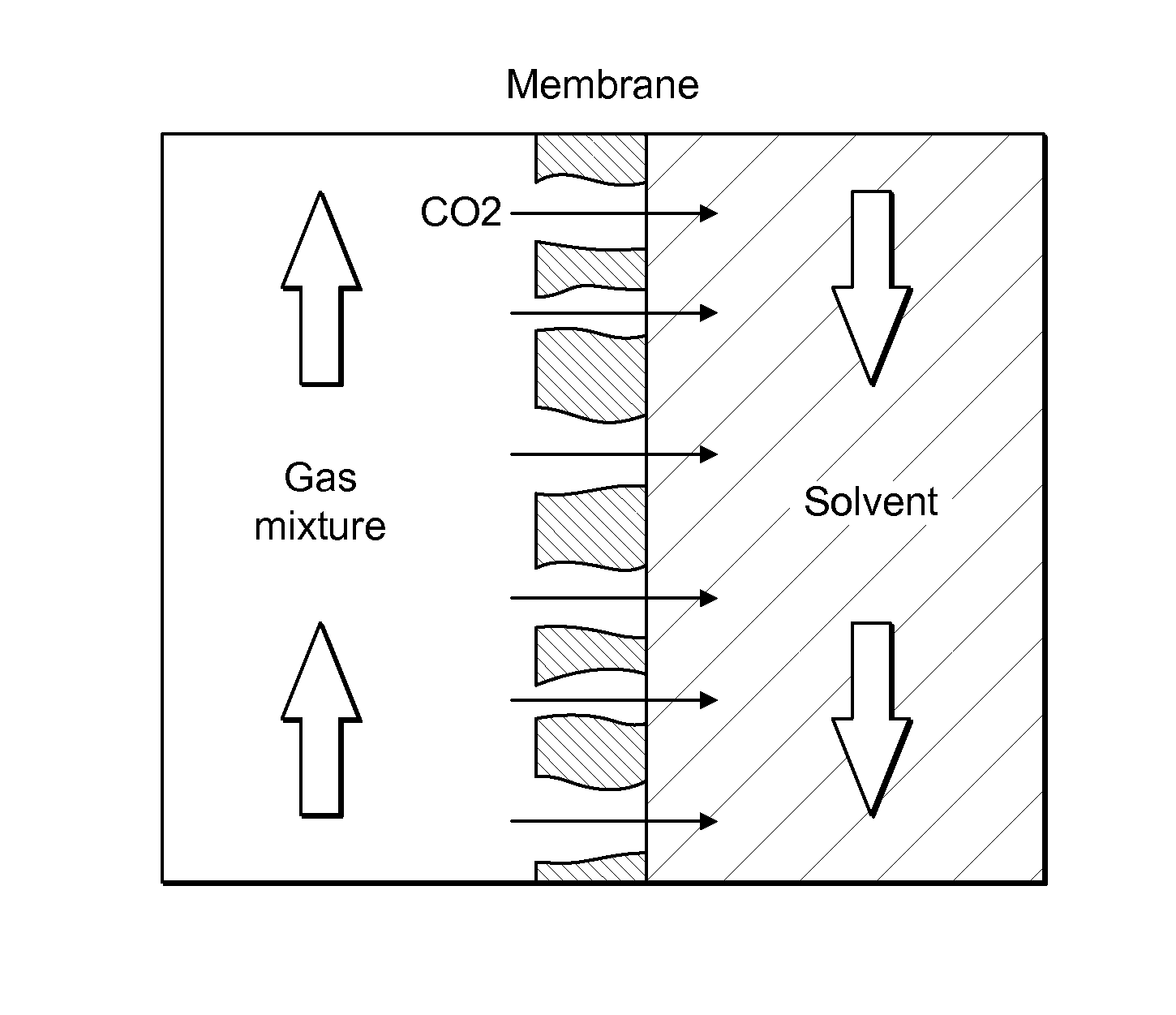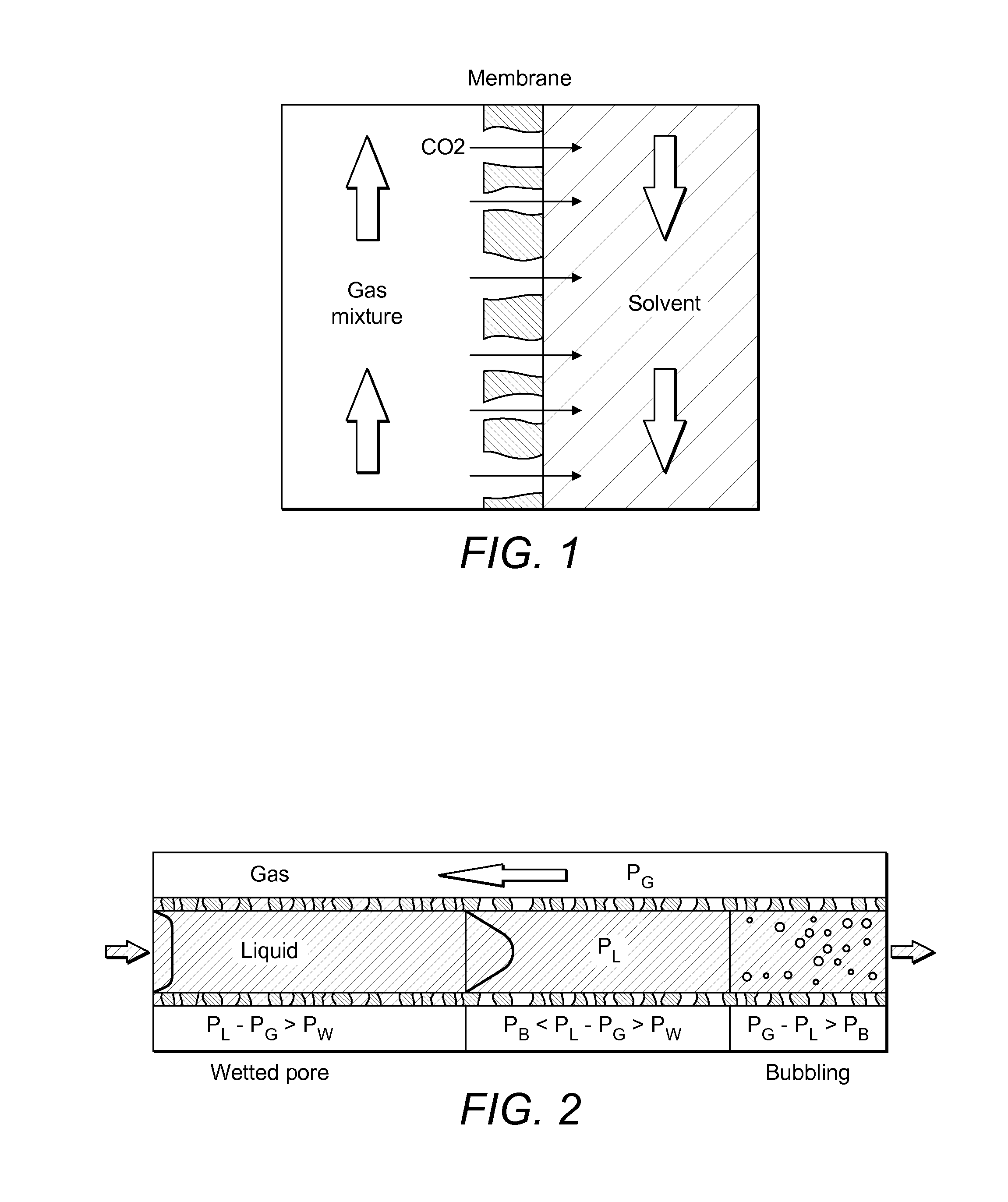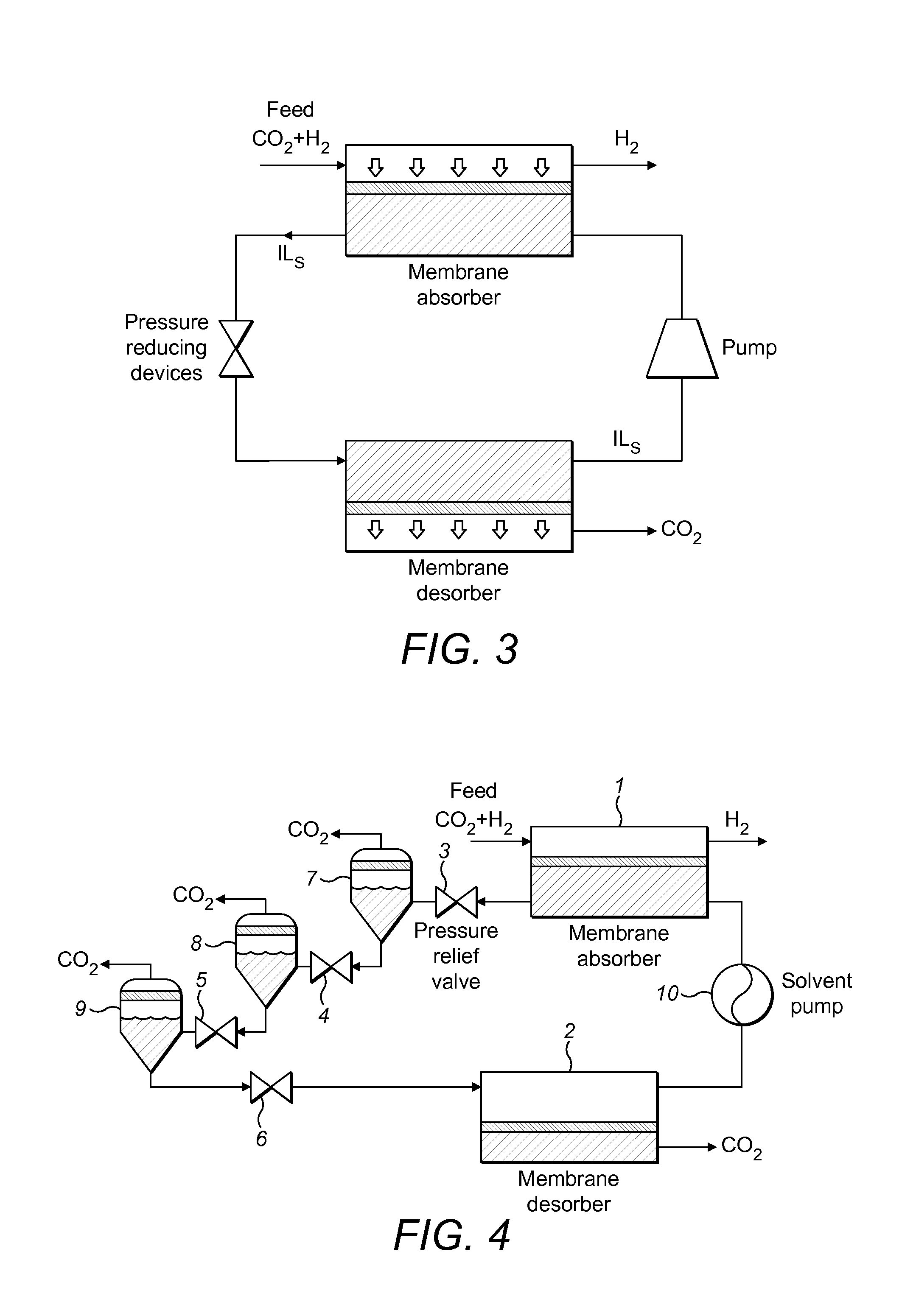Closed cycle continuous membrane ionic liquids absorption/desorption process for co2 capture
a technology of ionic liquids and closed-cycle membranes, which is applied in the direction of separation processes, gaseous fuels, fuels, etc., can solve the problems of difficult to achieve efficient separation of co2 before combustion, ammonia in the purge gas is often undesirable, and the public is concerned
- Summary
- Abstract
- Description
- Claims
- Application Information
AI Technical Summary
Benefits of technology
Problems solved by technology
Method used
Image
Examples
examples
[0125]1. CO2 / H2 Separation[0126]Based on simulation using a tubular porous glass tubular membrane and [Bmim][Tf2N] as absorbent at 20 bar, T=353K and 45% CO2 in feed, when liquid flow rate is 100 ml / min, membrane length=300 mm, membrane diameter=5 mm, and porosity=0.56, membrane thickness 0.2 mm, then approx. 80% of CO2 can be captured at gas flow rate 100 ml / min and 92% captured at gas flow rate 20 ml / min. The efficiency can be further increased by increasing the gas-liquid contacting area, e.g. by using modules with higher membrane packing density.
2. CO2 / CH4 Separation[0127]Based on simulation using a tubular porous glass membrane and [P66614][Pro] blended in polyethylene glycol (PEG) as absorbent (30 wt % [P66614][Pro] in PEG) at 10 bar, T=298K and 12% CO2 in feed, when liquid flow rate is 100 ml / min, membrane length=300 mm, membrane diameter=5 mm, and porosity=0.56, membrane thickness 0.2 mm, then approx. 85% of CO2 can be captured at gas flow rate 500 ml / min, and 99% CO2 captur...
PUM
| Property | Measurement | Unit |
|---|---|---|
| Pressure | aaaaa | aaaaa |
| Pressure | aaaaa | aaaaa |
| Pressure | aaaaa | aaaaa |
Abstract
Description
Claims
Application Information
 Login to View More
Login to View More - R&D
- Intellectual Property
- Life Sciences
- Materials
- Tech Scout
- Unparalleled Data Quality
- Higher Quality Content
- 60% Fewer Hallucinations
Browse by: Latest US Patents, China's latest patents, Technical Efficacy Thesaurus, Application Domain, Technology Topic, Popular Technical Reports.
© 2025 PatSnap. All rights reserved.Legal|Privacy policy|Modern Slavery Act Transparency Statement|Sitemap|About US| Contact US: help@patsnap.com



